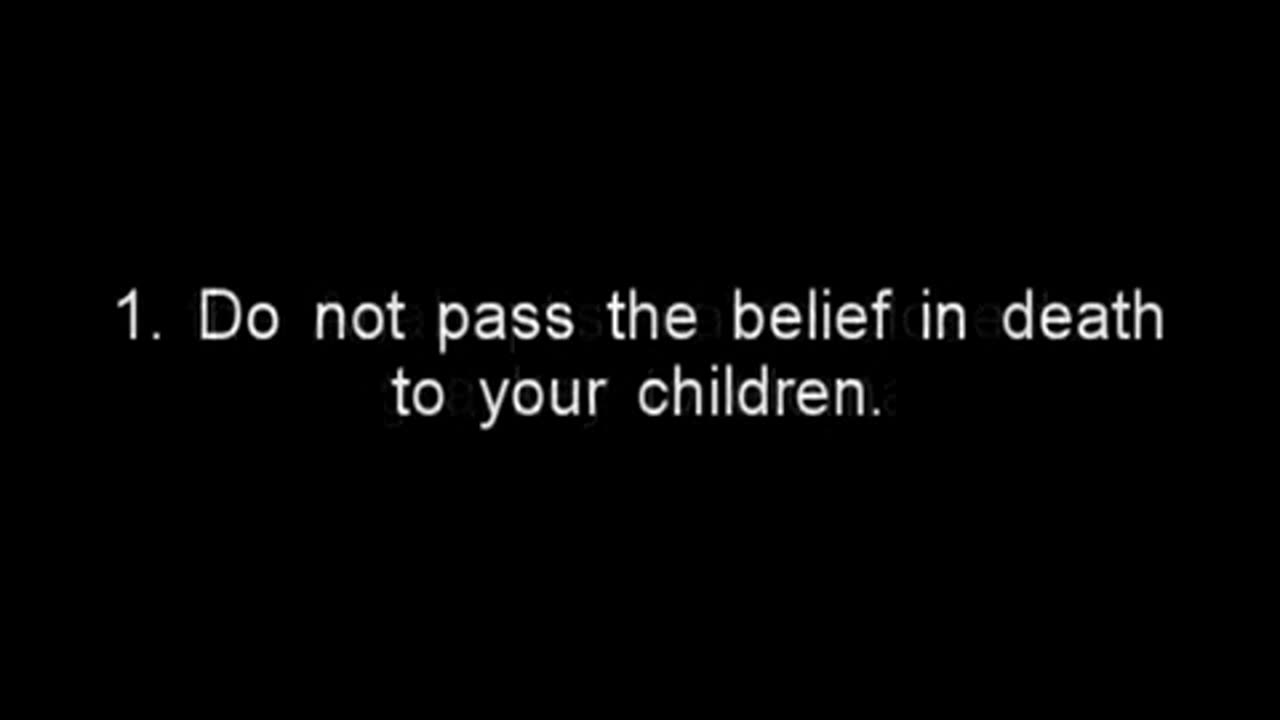Premium Only Content

Religion: A Contract with Death- A Historical Perspective Law of Attraction MetaPhysics Immortality
Now these folks were real gangsters.
The Black Plague’s Contribution to the Spanish Inquisition
Melissa Doherty
The Black Death in Europe came at a time when the Catholic Church was the cornerstone to every aspect of a commoner's life. From baptism to marriage, virtually every event in life was witnessed by the papacy. Fields were blessed by a priest in the spring before they were planted, and much of the land that the people worked was owned by a church or monastery (Williman 1982). It was this complete devotion to the Catholic Church that allowed people to believe that the plague was a curse from God, and heretics were the cause of the disease. Fear of the Black Death in Medieval Europe may have led to an increased persecution of non-Christians by the Spanish Inquisition. Although the Spanish Inquisition originated before the Black Death struck Europe, the fear that non-Christians were sources of the disease allowed rulers to take the Inquisition to levels that may not have been reached under other circumstances.
Although the plague, caused by the bacillus Yersinia pestis, most likely was present in Europe as early as the 6th century A.D. (Wiechmann and Grupe 2005), it was not primarily pneumonic until the early 14th century. It was the fear of the pneumonic plague that allowed people to believe the church when they claimed the disease was caused by a dissention of faith, rather than by other natural sources (Cantor 2001). Because little was known about the origins of diseases in the Middle Ages, people were told that illnesses were a divine punishment from God for their sins. Religious groups, such as the Muslims and Jews were seen for centuries as scapegoats for these diseases because their beliefs and actions allowed them to be viewed as sinners against God. It then comes as no great surprise, that when philosophers of the early 1300’s predicted a "great plague" as an eschatological sign of the end of the world, and people started falling ill from the Black Death, the public believed that this disease was attributed to the sin and corruptions of the non Catholics within their community (Williman 1982).
The persecution of non Catholics was a reoccurring event throughout Europe’s Middle Ages. During this time, loyalty to Christianity had taken the place of loyalty to a political state. The Catholic Church was the only stable institution that provided leadership and order to the common man (Stalcup 2001). This totalitarian state allowed Catholic leaders to persecute and expel non Catholics for decades, including throughout the Spanish Inquisition. The Spanish Inquisition began in 1215 to remove the Cathers, who had invaded via the Crusades’ trade routes from the Middle East. Initially, the Inquisition was only to put heretics on trial, and if they were found to be guilty against God, they were to be banished from Spain. Inquisitionists, however, often took matters into their own hands by whipping, racking or removing the tongues of those on trial to gather confession of heresy (Stalcup 2001). The Inquisitionist’s goal was to save souls by obtaining confessions of heresy and “converting all those convicted to orthodox beliefs” (Roth 1964). They were very successful in the early years, and had started pursuing other religious groups that conflicted with Catholicism soon after the Cathars were expelled. By the time the Black Death struck Europe in 1347, the Catholics had fully established the Inquisition in Spain, and had actively been persecuting heresy for more than 100 years via fear, torture, and deceit.
By the time the Plague diminished around 1350, over 50,000 heretics were killed in the name of the Catholic Church, and many more had abandoned their faith and converted to Christianity to survive. As small bouts of plague continued to erupt across Europe, anti-Semitism grew, and by 1391 the Jewish people were expelled from Spain all together. Those who remained in hiding were persecuted and killed for their beliefs throughout the early 19th century when the Inquisition was finally dismantled by the French (Stalcup 2001). Although the Spanish Inquisition did not begin with the Black Death, the plague may have increased the Inquisition’s fury by spreading fear and prejudice against non- Christians throughout Europe.
-
 1:03:45
1:03:45
We The People - Constitutional Conventions
5 days agoSam Cooper - Organized Crime and Corruption in Canada US GOV CANADA GOV are all involved (Sam is not fully educated
5892 -

Glenn Greenwald
3 hours agoUS/Venezuela Escalations: Revisiting Key Developments and the Push for Regime Change | SYSTEM UPDATE SPECIAL
27.7K46 -
 LIVE
LIVE
Barry Cunningham
3 hours agoBREAKING NEWS: LETITIA JAMES INDICTED FOR MORTGAGE FRAUD!!! LIBTARD TEARS ARE FLOWING!
2,502 watching -
 LIVE
LIVE
LFA TV
20 hours agoLIVE & BREAKING NEWS! | THURSDAY 10/9/25
753 watching -
 UPCOMING
UPCOMING
megimu32
25 minutes agoON THE SUBJECT: Sequels That Slapped! 🎬
-
 LIVE
LIVE
Total Horse Channel
11 hours ago2025 CMSA World/AQHA World of Mounted Shooting - Thursday
59 watching -
 43:48
43:48
MattMorseTV
1 hour ago🔴Antifa's DARK MONEY just got EXPOSED.🔴
2.53K4 -
 54:17
54:17
Donald Trump Jr.
8 hours agoPeace Deal Announced, Plus Interview with The Federalist's Sean Davis | TRIGGERED Ep.281
75.8K64 -
 LIVE
LIVE
SpartakusLIVE
1 hour agoNEW Update, NEW Meta || Zombies Mode is BACK - Smokes NURFED
106 watching -
 56:40
56:40
BonginoReport
9 hours agoHollyweird Explained By Pop Culture Princess Adrienne Gray - Hayley Caronia (Ep.152)
34.5K27